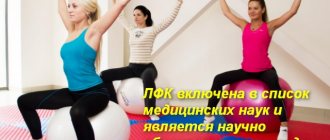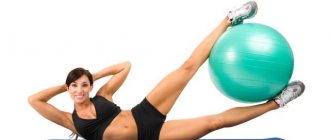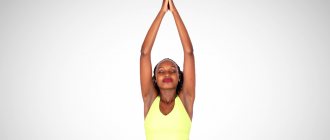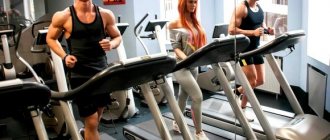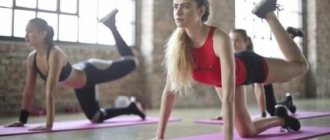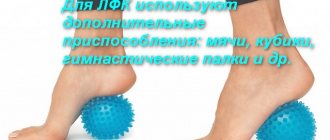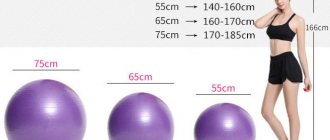What are gymnastic mats made of?
Depending on the purpose of the gymnastic mat, the base material for it is selected:
- Furniture foam rubber is a soft material of varying densities. Children's gymnastic mats are made from foam rubber with a density of 22–25 kg/m2; designed for adult athletes - density 25–30 kg/m2. This filler does not tolerate sudden changes in temperature and moisture, so if storage conditions are not met, the foam mat becomes unusable within a few years.
- Foamed polypropylene is cheap and practical, which makes it widely used in various fields, from building houses to making sports equipment. Does not suffer from moisture. The permissible temperature range of this material is very large, from -80 °C to +80 °C. For the manufacture of gymnastic mats, foamed polypropylene with a density of 25–30 kg/m2 is used.
- Recycled foam rubber has high density. Due to its high cost, it is used only for the production of professional gymnastic mats (for big sports). For ordinary school gyms, such mats are purchased extremely rarely.
- Rubber. Sports rubber mats, varying in thickness and density, are very popular. Most often, outdoor sports grounds are covered with such products. This material is wear-resistant and remains intact at both high and low temperatures.
Obviously, the dimensions of gymnastic mats, like the material, are also determined by the purpose of the product. You can make a mat of almost any size.
Many properties of a gymnastic mat - durability, safety and ease of use - depend on its surface. The anti-slip coating must remain so even when wet from the sweat of athletes: situations should not be allowed when a person slips on the mat during a competition and loses it or gets injured during training.
As for sports equipment and supplies for schools, including gymnastic mats, they are subject to much more modest requirements. The main thing is that the cover is sufficiently durable. For schools, tent mats are usually purchased from PVC with soldered rather than stitched seams. Such products are reliable, last a long time and in any case pay for their low price.
Sports gymnastic mats according to GOST
This GOST concerns sports gymnastic mats that are used during training and competitions in sports schools and other educational institutions, and contains safety standards for mats of types 1–8. The remaining mats (types 9–12 and intended for professional sports competitions at the international level) are not covered by this standard.
GOST defines the following terms, which are characteristics of a gymnastic mat:
- Shock absorption characteristics – the ability of the coating to deform from impact and elastically take the shape of the athlete’s body.
- Elasticity is the ability to give off mechanical energy in response to an impact.
- The top side is the surface of the gymnastics mat with which the athlete comes into contact while training.
- The underside is the surface of the coating facing the floor during operation.
Classification of gymnastic mats according to GOST:
All of the listed categories of mats are subject to requirements for shock-absorbing properties, deformation values, elasticity, and abrasion of the upper and lower sides.
Recommended articles to read:
- Wall-mounted horizontal bar for home: a simple but effective exercise machine
- Production of sports equipment, range and properties of products
- Flooring for the gym: types, characteristics, selection tips
Acceptable values of elasticity, shock absorption and deformation:
Safety standards for the depth of abrasion on both sides of the gymnastic mat:
In addition to meeting these parameters, any gymnastic mat must also have a clearly visible and indelible marking that is applied to the bottom surface of the product.
It should display:
- type of mat;
- this GOST;
- brand or manufacturer's name;
- year of manufacture of the product.
How to make a gymnastics mat with your own hands
The easiest option is to buy a ready-made gymnastic mat of the required density in the store. However, if you have tailoring skills, you can sew such a mat with your own hands. All necessary materials can be easily purchased in stores.
To sew one gymnastics mat you will need furniture foam rubber (or polyurethane) 6–10 cm thick. This material is used for the production of modern mattresses and is elastic and high-density.
To begin, cut out pieces of polyurethane foam of the required size. For a standard gymnastic mat model, the filler size is 1330x230 mm.
After this, proceed to making the cover. Covers for homemade mats are best made from caprovinyl or reinforced polyvinyl chloride. Synthetic fabrics are highly durable and water-repellent, making sports surfaces easy to clean. Before purchasing fabric, make sure that it is non-toxic and safe for humans!
The pattern of the cover is made according to the size of the filler blank in the amount of two pieces (for the bottom and top sides) plus four side parts. Leave a two-centimeter seam allowance for each cut.
Now you need to sew all the parts from the inside out. Leave one side unstitched: through it you will have to turn the cover inside out and insert the base of the filler into it. When using the finished product, the cover will be removed from time to time for washing and cleaning.
The long sides of the gymnastic mat can be equipped with straps made from slings or remnants of the fabric from which the cover is made. The straps are useful for children to carry the mat.
Balance program for newborns
- Acceleration on the mat - forward and backward. Many kids like both the exercise and the sound that the mat makes when crawling on the carpet. A simple way to calm an upset baby. Fold the mat in half to make it more rigid and place it on the floor. Place the child face down on this mat. He should be perpendicular to you (that is, with his head to one of your hands, his feet to the other). Now pull the mat with your right hand to the right - it will move forward; then with your left hand pull to the left - it will move back.
- Accelerate right and left. Rotate the mat 90 degrees so that your baby is facing you. Pull the mat with your left hand so that it moves to the right, and then with your right hand so that it moves to the left. This will be acceleration left and right.
- Horizontal clockwise rotation. Place your newborn on his stomach along the mat, with the baby's head close to the edge. Grab the other end of the mat and begin to rotate it clockwise.
- Horizontal counterclockwise rotation. Repeat the above, changing only the direction of rotation.
- Roll forward. This exercise can be started even when the child is not even six months old and cannot walk yet. Carefully lower him head down onto the soft mat and, bending his head down with one hand and holding his hips with the other, carefully roll him over. Do this 10-15 times a day and you will teach the child’s brain to navigate in this direction during somersaults.
A set of morning exercises for schoolchildren
- Walking in place. Charging takes 60 seconds. The legs should not be far from each other, the hands can be lowered or placed on the belt.
- Bend forward. The exercise is performed 6-8 times. Spread your legs wider, hands touching your shoulders. 1) while inhaling, bend forward and pull your arms to the sides. 2) exhaling, put your arms and legs in their original position.
- Legs spread apart. 8-9 approaches are allotted for the exercise. At the beginning of the exercise, you need to stand up straight and lower your arms at your sides. 1) while inhaling, spread your arms to the sides, move one leg to the left, on the second approach the leg is moved to the right.
- Touching the floor. Performed 9-10 times. Legs shoulder-width apart, arms extended along the body. 1) as you inhale, you bend forward and your hands touch the floor 2) as you exhale, the body rises and takes its original position.
- Touching feet. The exercise is performed up to 8-15 times. The initial position of the legs should be placed at shoulder width, hands at the sides. 1) tilts are made, touching the left leg with the right hand and, vice versa, while the second arm is moved to the side. 2) return to the starting position.
- Raising your arms up with a jerk. Repeat the exercise up to 15 times. At the beginning of the exercise, the legs are together, the hand is raised up and the other hand is clenched into a fist along the body. 1) A step is taken forward, the hands change position, and a jerk is made back. 2) return to the starting position.
- Walking with sharp turns. The exercise is done 8-10 times. Stand up straight, put your hands on your belt. 1) When lunging with the right leg, the body turns to the right; when lunging with the left leg, the body turns to the left. 2) After each lunge, return to the starting position.
- Torso rotations. Repeat the exercise up to 15 times. The initial position involves the legs being closed together and the arms placed on the waist. 1) Turns are made in different directions. 2) when turning, the legs remain in their original position.
- Another option for turns. The exercise is performed as one of the variations of torso rotation. Starting position: legs together, hands behind your head. 1) the body is rotated in different directions. 2) return to the starting position.
- Jumping in place. Perform up to 15 times. Hands are placed on the waist, legs together. 1) three jumps are made in place, then on a count of four, jump with a turn of 180 or 360 degrees. 2) after which everything is repeated in the other direction.
- Running with 180 degree turns. The exercise is done 6-9 times. Starting position: stand as before running. 1) starting from the start, run 5-10 meters, then turn around and run to the starting point. 2) The same thing is done up to 10 times.
- Relaxation. This is done 5 times. Legs spread apart, arms at your sides. 1) as you inhale, your arms stretch up, your toes stretch out; 2) as you exhale, the body and arms suddenly fall forward.
Such exercises are performed in the morning, but if for some reason this cannot be done, then it should be rescheduled to another time.
